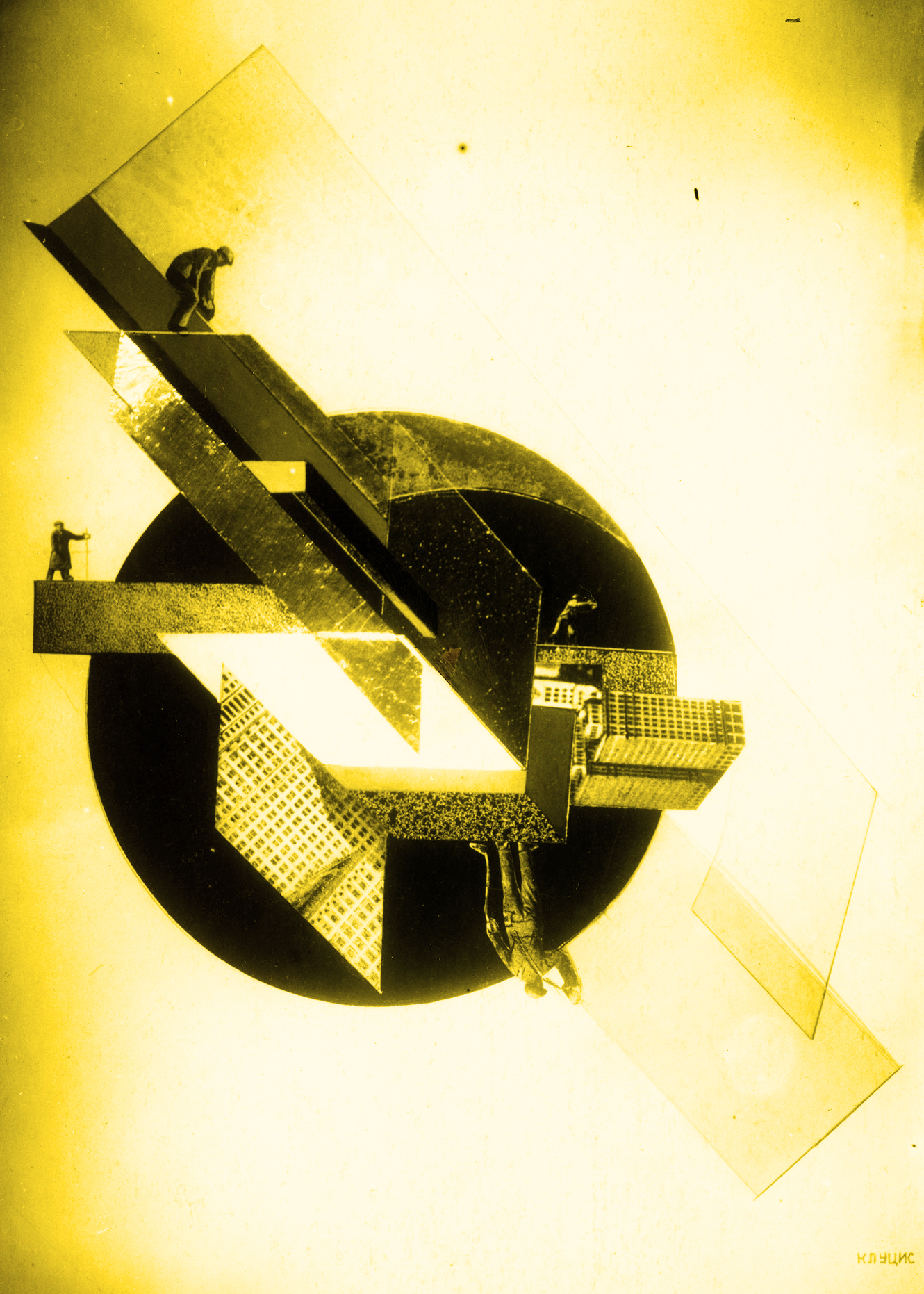
Gustav Klutsis, Dinamicheskii gorod, 1919
The course Special Topics in History and Theory of Architecture and the City: Modern Correlations explores the origins of modern thinking and practice in architecture and urbanism. Starting with a brief examination of the 18th-19th centuries, it focuses on the modern condition, as it was exemplified by the avant-garde movements in architecture and urban planning of the 20th century, that remain dominant architectural paradigms until nowadays. The historical, theoretical and critical examination of design procedures in both architecture and urbanism aims at understanding the methodological tools of structures, in multiple scales, from the architectural unit to the urban whole.
The course Modern Correlations aims at sharpening the students’ critical thinking and historical consciousness. It studies the general modern period, searching for the outsprings of modern ideas and practices in architecture and urbanism in the 18th-19th centuries to focus on the modern condition of the 20th-century avant-garde movements.
The course examines the history of modern architecture, derived from the methodological study of texts and documents of that time. The unity of architectural thought and practice is at the core of the course Modern Correlations. Any theoretical or practical architectural work consists of a logical structure, based on complex architectural correlations of multiple and different parameters. The method of documenting the various parameters in architectural history offers the students a significant analysing and creative tool of theoretical and critical reflection.
The course’s primary goals are: documenting, examining, interpreting, considering, contemplating, experimenting with the variable architectural parameters. Since every work (theoretical or practical) is a construction, an essai [trial or attempt], the students’ toolbox is enriched by methods of architectural representation (drawings, diagrams, collage and much more) in order to test their conceptual models. These attempts respond to specific questions triggered by the topics discussed through the series of lectures as the semester proceeds.
By the end of the course, the students will have:
- Deepened their knowledge in the history and theory of modern architecture.
- Sharpened their critical ability and understanding of history.
- Challenged the uniqueness of architectural history, examining alternative approaches and narratives on historical evidence.
- Practiced their representational skills in architecture by using multiple means and conceptual structures.
- Acquainted with the various scales in architecture, from the domestic unit to the whole city.
The students will work on a topic chosen after discussion in class. This topic will be based on texts, books, and other documents or works of architecture and urbanism examined in the course of the semester. Each student’s project will be a conceptual construction: an essay accompanied by images or other modes of representation.
- Banham, Reyner. Theory and Design in the First Machine Age. London: Architectural Press, 1960.
- Botar, O. & Wünsche, I. (ed.). Biocentrism and Modernism. Oxford/N.Y.: Ashgate, 2016 (2011).
- Călinescu, Matei. Faces of modernity: Avant-garde, decadence, Kitsch. Bloomington: Indiana Univ. Press, 1977.
- Cohen, Jean-Louis. The Future of Architecture. Since 1889. London: Phaidon, 2012.
- Colomina, Beatriz. Privacy and publicity: modern architecture as mass media. Cambridge, MA: MIT Press, 1994.
- Collins, Peter. Changing Ideals in Modern Architecture 1750-1950. London: Faber and Faber, 1965.
- Curtis, J.R.William. Modern Architecture since 1900. London/NY: Phaidon Press, 1982.
- Doxiadis, C. A. Ekistics: An Introduction to the Science of Human Settlements. London: Hutchinson, 1969.
- Forgács, Éva. The Bauhaus Idea and Bauhaus Politics. Budapest: Central European University Press, 1995.
- Gropius, Walter. The new architecture and the Bauhaus. London: Faber, 1965.
- Hays, Michael. Modernism and the posthumanist subject: the architecture of Hannes Meyer and Ludwig Hilberseimer. Cambridge, MA.: The MIT Press, 1995.
- Heynen, Hilde. Architecture and Modernity: a critique. Cambridge, MA:MIT Press,1999.
- Howard, Ebenezer. Garden Cities of To-morrow. London: Swan Sonnenschein & Co., 1902.
- Jameson, Frederic. A Singular Modernity: Essay on the Ontology of the Present. London, New York: Verso, 2012.
- Koolhaas, Rem. Delirious New York: A Retroactive Manifesto for Manhattan. New York: The Monacelli Press, 1994.
- Lefebvre, Henri. The Production of Space. Oxford: Blackwell, 1991.
- Mumford, Eric Paul. The CIAM Discourse on Urbanism, 1928-1960. Cambridge, MA: MIT Press, 2002.
- Sadler, Simon. The situationist city. Cambridge, MA: MIT Press, 1988.
- Shoshkes, Ellen. Jaqueline Tyrwhitt: A Transnational Life in Urban Planning and Design. London, New York: Routledge, 2013.
- Smithson, Alison & Peter (eds.). The emergence of Team 10 out of C.I.A.M.: documents. London: Architectural Association, 1982.
- Steadman, Philip. The evolution of designs: biological analogy in architecture and the applied arts. New York: Routledge, 2008.
- Vidler, Anthony. The architectural uncanny: essays in the modern unhomely. Cambridge, MA: MIT Press, 1992.
